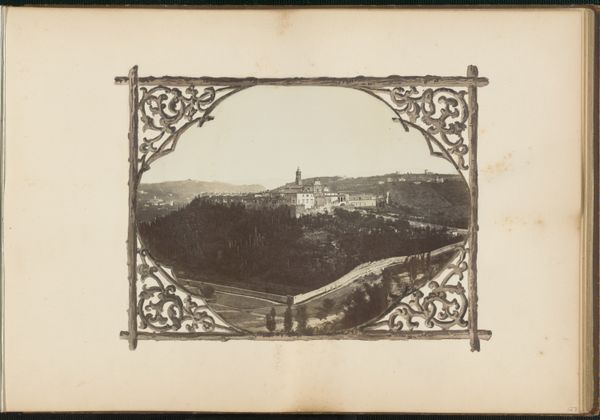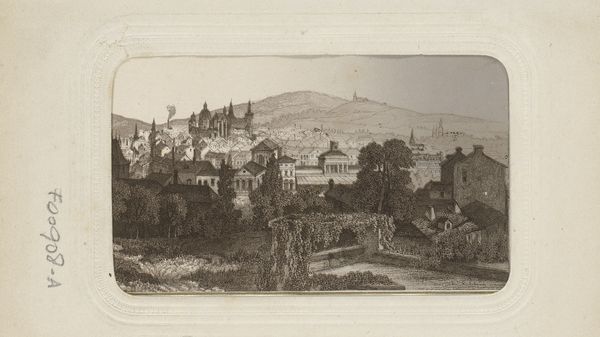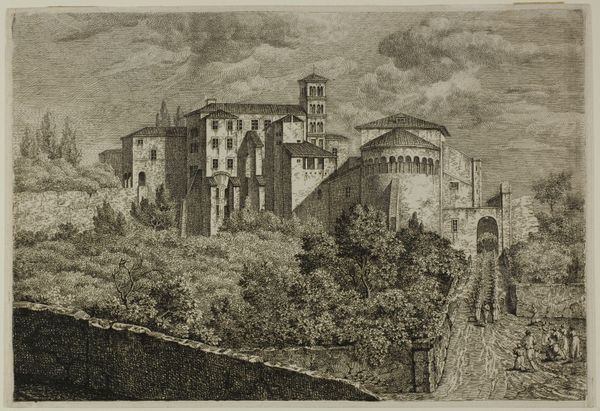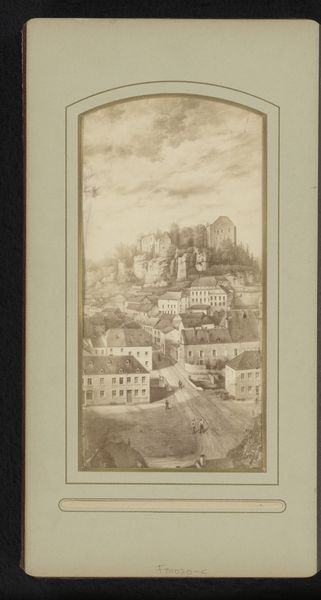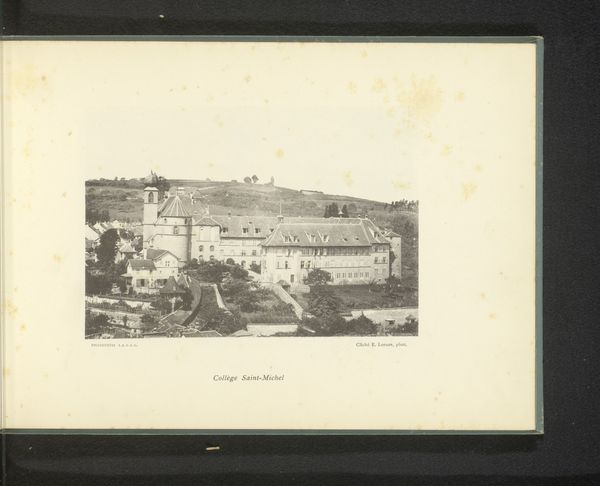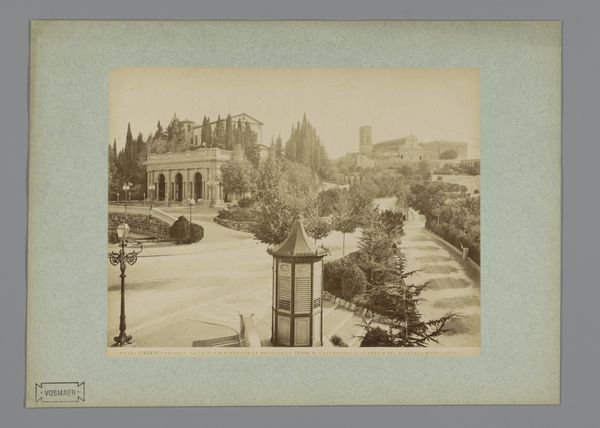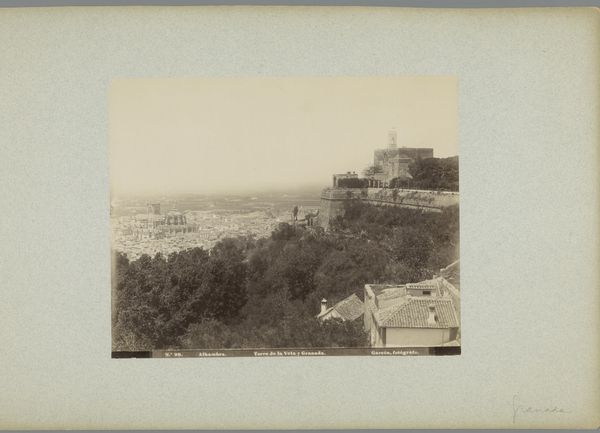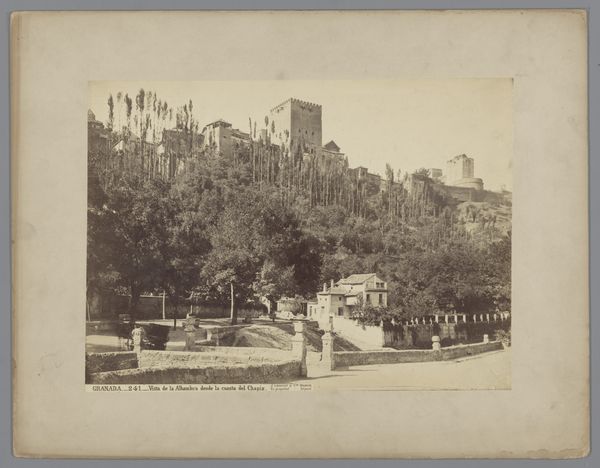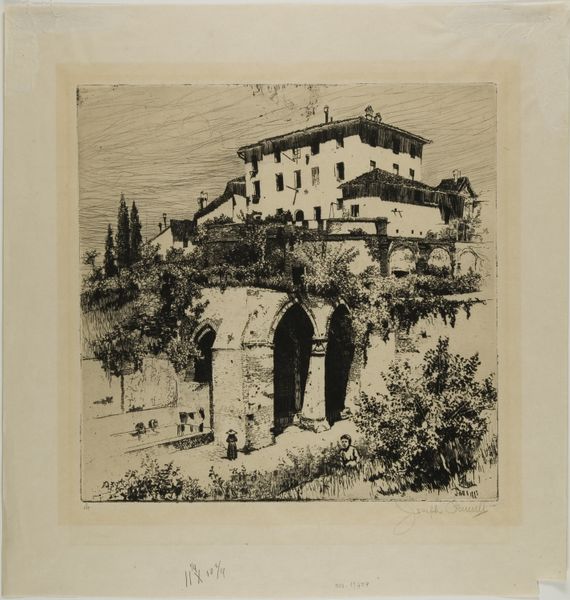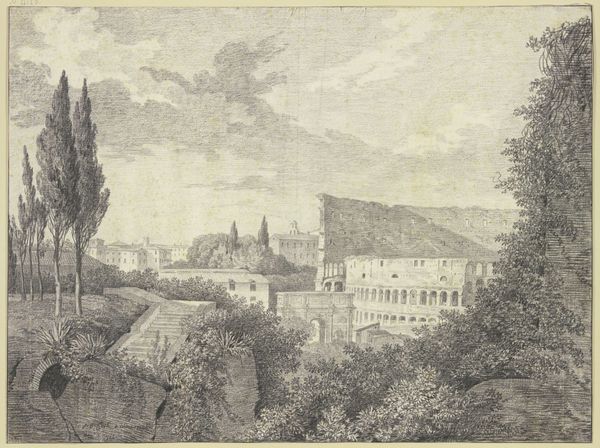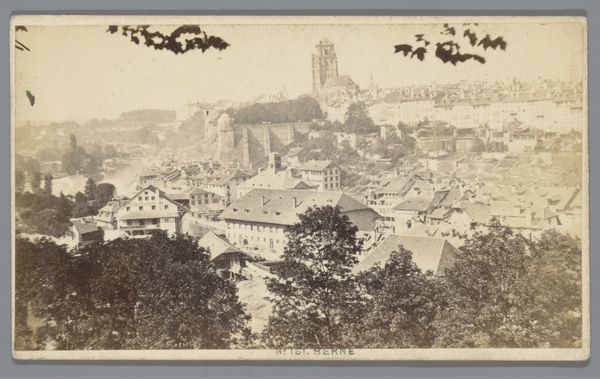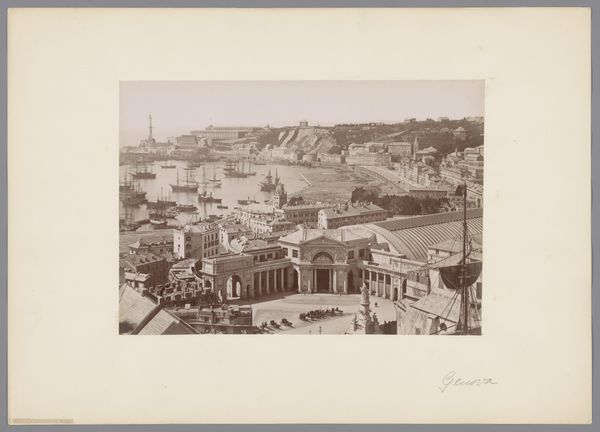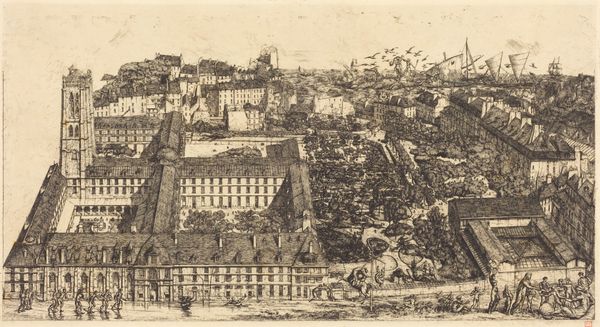
Reproductie van een prent van een gezicht op de Drachenfels in Duitsland c. 1870 - 1900
0:00
0:00
Dimensions: height 96 mm, width 133 mm
Copyright: Rijks Museum: Open Domain
This is Ernst Roepke’s reproduction of a print of the Drachenfels in Germany, made through photographic printing. This small card, likely mass-produced, reveals much about the society that consumed it. Photographic printing, though seemingly automated, involved considerable labor. From the preparation of light-sensitive materials to the careful development process, each step demanded precision. This print isn't just an image; it's a product of skilled work, cleverly disguised by its seemingly simple nature. The choice of subject also tells a story. The Drachenfels, a popular tourist spot, suggests a rising middle class with leisure time and the means to travel. Roepke’s print democratizes the experience of art; for a modest price, anyone could own a piece of the picturesque. The print’s existence challenges traditional ideas about art. It’s not a unique masterpiece, but a multiple, designed for widespread consumption. By focusing on the materials, labor, and social context, we understand how even a seemingly simple photograph connects to larger histories of production, class, and culture.
Comments
No comments
Be the first to comment and join the conversation on the ultimate creative platform.
